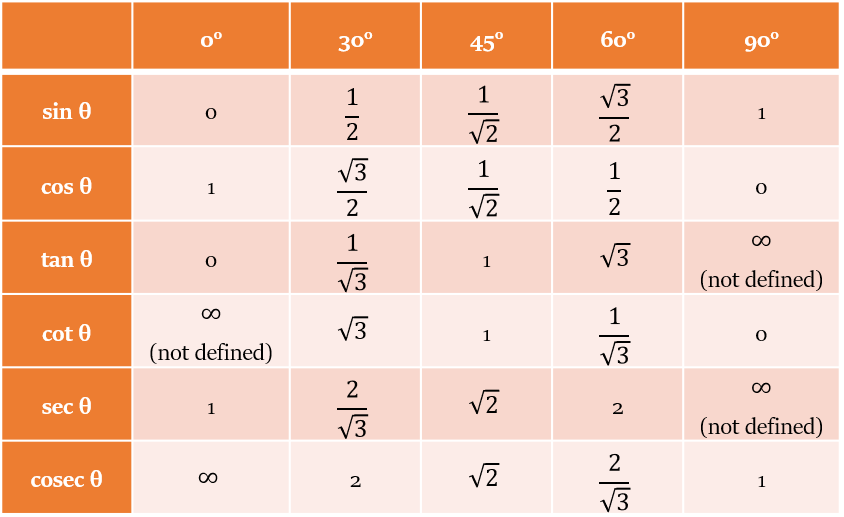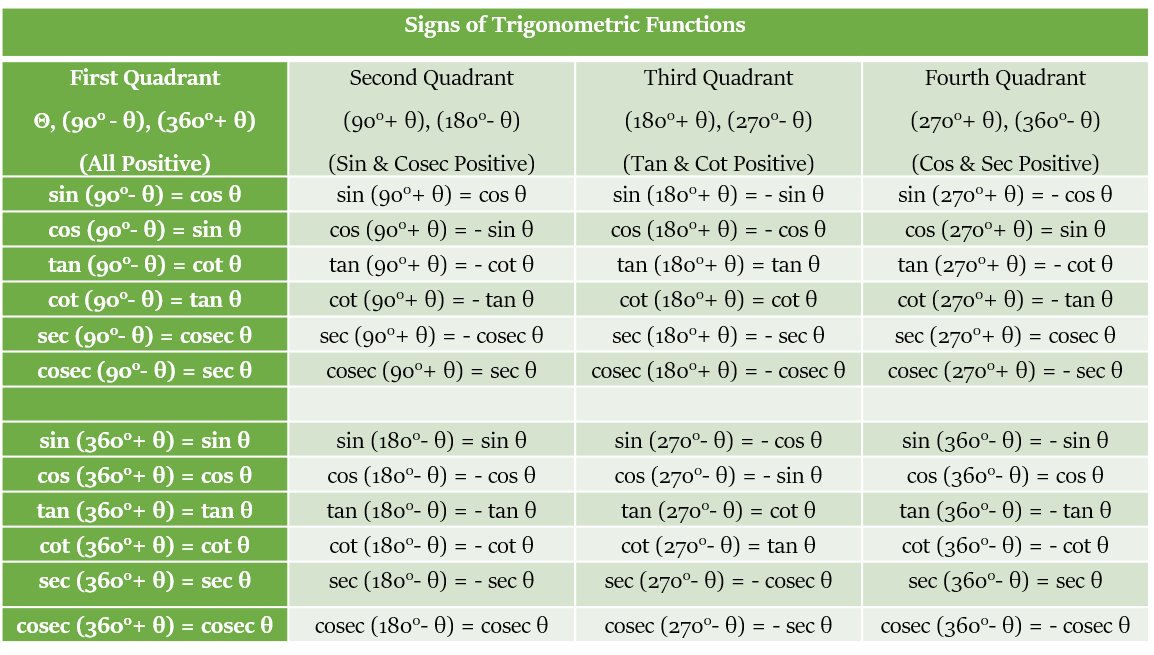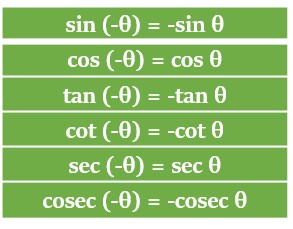Introduction to Trigonometry
What is Trigonometry?
Trigonometry is a branch of mathematics, that studies relationships involving sides and angles of triangles.
The word ‘Trigonometry’ has been made by combining three Greek words:
- ‘tri’ - it means three,
- ‘gon’ - it means sides and
- ‘metron’ - it means measure
Functions in trigonometry
Functions in trigonometry are basically the ratios of the sides of a right-angled triangle. They express the relationship between the acute angle of a right-angled triangle and the length of its sides.
Have a look at the following figure of a right-angled triangle.

The main functions in trigonometry are:
| Name | Trigonometry function |
|---|---|
| Sine | sin θ = |
| Cosine | cos θ = |
| Tangent | tan θ = |
| Cosecant | cosec θ = |
| Secant | sec θ = |
| Cotangent | cot θ = |
 P → Perpendicular; B → Base; H → Hypotenuse
P → Perpendicular; B → Base; H → HypotenuseValues of Trigonometric Functions
Have a look at the values of Trigonometric Functions for some important angles from 0° to 90°.

You should remember these values.
Just remember sin and cos values, and maybe tan values too. Though you may find out the tan values by dividing sin values by corresponding cos values.
Values of cosec, sec and cot are reciprocal of the values of sin, cos and tan respectively.
Both of these are not defined.
Signs of Trigonometric Functions
So, now we know the values of Trigonometric Functions for angles such as 30°, 45°, 90° etc. All of these angles fall in the first quadrant.

But what about such angles in other quadrants, e.g. 120°, 225°, 180° etc. ?
Here are the three steps that you need to follow:
Step 1: Find out the quadrant to which the angle belongs.
Step 2: Use the appropriate formula, to find the value of the concerned Trigonometric Function.
Step 3: Don’t forget to use the appropriate sign.

We can draw following conclusions from the above table:
The sign of the Trigonometric Function will depend on which quadrant the angle falls in. It can be represented using the following figure:

When the angle is a multiple of 180°, e.g. 0°, 180°, 360°, … etc., then trigonometric function will not get changed. For example, sin (180° - θ) = sin θ, tan (180° + θ) = tan θ etc.
When the angle is an odd multiple of 90°, e.g. 90°, 270°, … etc., then trigonometric function will get changed. For example, cos (90° - θ) = sin θ, sin (270° - θ) = - cos θ

Relation between Degree and Radian
1 radian =
And 1° =
For example, 90° = 90° ×
180° can also be written as π
360° can also be written as 2π
Have a look at the diagram shown below:
In a circle, radian of the angle made by an arc on the centre of the circle, is the ratio of the length of the arc and the radius of the circle.
In other words, an arc of the same length as that of the radius, will make an angle of 1 radian at the centre of the circle.

